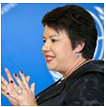In the wake of the Morgan Foundations hard-hitting report “Climate Cheats”, Simon Johnson (aka Mr February) asks if New Zealand Steel received millions of emission units for free under the New Zealand Emissions Trading Scheme industrial allocation provisions and yet still bought millions of the dubious international Russian units (ERUs) to make windfall arbitrage profits.
The Morgan Foundation’s latest report “Climate Cheats” has been sizzling across the various media in the last week. The language of the report is refreshingly non-neutral and unashamedly emotive. It is in equal parts compelling and condemning.
Carbon credit scheme a farce, reported the Herald. Climate change cheating, said Radio New Zealand. Dodgy deals, climate swindle, climate fraudsters, junk carbon scam, said report author Geoff Simmons.
As a consequence, “Climate Cheats” is an easy and engaging read – no mean feat given the topic – that is also thoroughly well-researched. It really is a ‘high integrity’ credit to it’s authors (if you pardon the pun).
In this post I want to look specifically at one particular type of corporate conduct – arbitrage profiteering – covered in “Climate Cheats”.
Continue reading “Did NZ Steel make windfall arbitrage profits from the ETS?”


 This is the biggest new coal burning project in the country, with the hearing happening just as our Minister for Climate Change is about to travel to New York to sign the Paris agreement where we undertook to reduce our greenhouse emissions a totally inadequate 11% below 1990 levels. (It’s even more inadequate when
This is the biggest new coal burning project in the country, with the hearing happening just as our Minister for Climate Change is about to travel to New York to sign the Paris agreement where we undertook to reduce our greenhouse emissions a totally inadequate 11% below 1990 levels. (It’s even more inadequate when 
You must be logged in to post a comment.